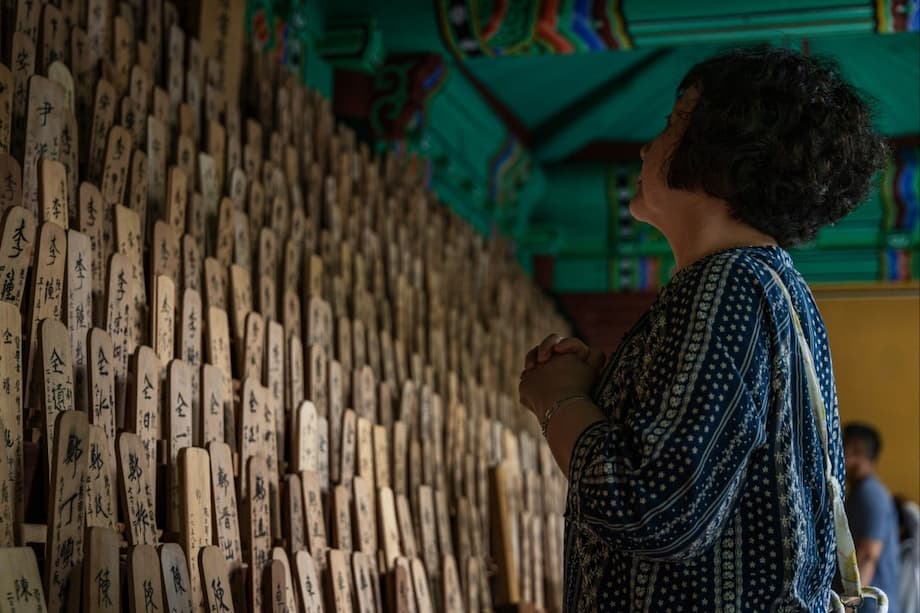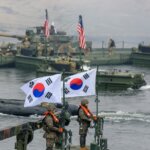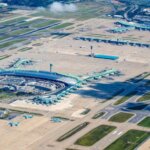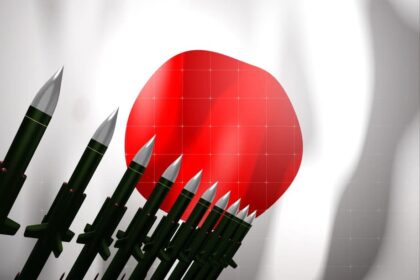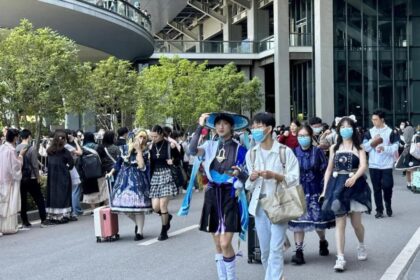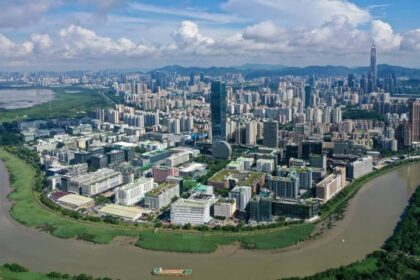The Forgotten Victims: Koreans in Hiroshima and Nagasaki
On a quiet summer morning in Hapcheon county, South Korea, a solemn gathering took place at a modest shrine. Elderly men and women, some leaning on canes and others clutching handkerchiefs, assembled to honor the dead and remember a history long overshadowed by silence. This was the 80th anniversary of the atomic bombings of Hiroshima and Nagasaki—a tragedy that, while often told through Japanese suffering, also deeply scarred the Korean people. Koreans made up a significant portion of the victims, yet their stories have remained largely marginalized for decades.
- The Forgotten Victims: Koreans in Hiroshima and Nagasaki
- Why Were So Many Koreans in Hiroshima and Nagasaki?
- Surviving the Bomb: Trauma, Stigma, and Silence
- Generational Impact: Health and Hardship
- Discrimination and the Struggle for Recognition
- Memorials, Memory, and the Fight Against Nuclear Weapons
- International Responsibility and the Search for Justice
- Why Their Story Matters Today
- In Summary
As the world marks this grim milestone, South Korea’s atomic bomb survivors and their descendants are speaking out, determined that their pain and their history will not be forgotten. Their struggle for recognition, justice, and support continues, even as their numbers dwindle and the world’s attention shifts elsewhere.
Why Were So Many Koreans in Hiroshima and Nagasaki?
To understand the Korean presence in Hiroshima and Nagasaki in 1945, one must look back to Japan’s colonial rule over the Korean Peninsula from 1910 to 1945. During this period, hundreds of thousands of Koreans were brought to Japan—many as forced laborers, others seeking survival under harsh colonial policies. By the time the United States dropped the atomic bombs, it is estimated that between 50,000 and 140,000 Koreans were living in Hiroshima, with thousands more in Nagasaki. Most worked in dangerous, menial jobs at military sites, factories, or as laborers in the city’s infrastructure.
When the bombs fell—first on Hiroshima on August 6, then on Nagasaki on August 9—Koreans accounted for roughly 10 to 20 percent of the immediate casualties. Many died instantly; others succumbed to radiation sickness, burns, and dehydration in the following months. The devastation was so complete that records are sketchy, further complicated by Japan’s colonial policy that banned the use of Korean names, making it difficult to track victims and survivors.
Surviving the Bomb: Trauma, Stigma, and Silence
For those who survived, the ordeal was far from over. The physical and psychological scars ran deep. Survivors, known in Japanese as hibakusha, faced not only the trauma of the bombings but also the stigma attached to their experiences. In Japan, Koreans were treated as second-class citizens, often given the most dangerous jobs and denied access to adequate medical care. After the bombings, many Koreans were forced to clean up the dead and clear radioactive rubble, further exposing them to lethal fallout.
When the war ended and Korea was liberated from Japanese rule, about 23,000 Korean survivors returned home. But instead of finding solace, they encountered suspicion and discrimination. Rumors spread that radiation sickness was contagious, and many believed that those who had been in Japan were somehow tainted. Survivors hid their past, fearing rejection from their communities and even their own families. As 83-year-old Ahn Won-sang recalled, “We hid that we were victims after returning to our village. When people found out you were in Japan, they avoided you. They thought they’d get contaminated just by being near atomic bomb survivors.”
The silence was often so complete that even close relatives were unaware of their loved ones’ suffering. Bae Kyung-mi, who was five years old when the bomb fell on Hiroshima, never told her husband or children about her experience. Her sons only learned the truth decades later when she registered at a special center for survivors in Hapcheon. The fear of stigma was so great that many survivors endured radiation-linked illnesses in secret, undergoing surgeries and treatments without ever revealing the cause.
Generational Impact: Health and Hardship
The legacy of the atomic bombings did not end with the first generation. Studies have shown that the children and grandchildren of survivors—known as the second and third generations—are more vulnerable to illnesses, including higher rates of cancer, heart disease, anemia, and depression. Many families have reported congenital illnesses and disabilities, fueling fears that the effects of radiation exposure are being passed down.
Yet, proving a direct link between these health issues and the bombings is scientifically complex and expensive. Survivors and their descendants have struggled to gain official recognition and support. Han Jeong-sun, a second-generation survivor who suffers from avascular necrosis and whose son was born with cerebral palsy, expressed her frustration:
“My illness and my son’s disability are the proof, but they are not recognized.”
The Korean Ministry of Health and Welfare has begun gathering genetic data and is considering expanding the definition of victims to include descendants if the evidence is statistically significant. But for many families, help has come too late or not at all.
Today, there are believed to be about 1,600 South Korean survivors still alive, with 82 residing at the Hapcheon Atomic Bomb Victim Center. The center, established in 1996, has become a focal point for commemoration and advocacy, but resources remain limited. In 2016, South Korea enacted a special law providing survivors with a modest monthly stipend—about $72—but this does not extend to their children or grandchildren, many of whom continue to suffer from related health problems.
Discrimination and the Struggle for Recognition
Discrimination against Korean hibakusha has been a persistent problem, both in Japan and in Korea. In Japan, survivors were often excluded from government relief measures, which initially only supported those residing in Japan. Zainichi Koreans (ethnic Koreans living in Japan) faced bureaucratic barriers and were largely denied medical benefits. Even within Japanese advocacy groups, Korean survivors were sidelined, raising uncomfortable questions about colonialism and national identity.
For decades, the Korean government showed little interest in its own victims. It was not until 2019 that the Ministry of Health and Welfare released its first fact-finding report on Korean atomic bomb survivors. Grassroots organizations and individual activists, both in Japan and Korea, played a crucial role in providing medical aid and raising awareness. Japanese doctor Kawamura Toratarō, motivated by a sense of responsibility for Japan’s colonial past, invited Korean survivors to his hospital in Hiroshima at his own expense. Anti-nuclear groups organized medical missions to South Korea and established clinics in Hapcheon, treating thousands of survivors when official support was lacking.
Legal victories in Japan eventually opened a path for overseas victims to receive aid, though this was often framed as charity rather than compensation. In 2015, a Japanese Supreme Court ruling guaranteed reimbursement of medical expenses for overseas hibakusha, a belated but important step toward justice. Yet, many survivors still feel that true recognition—an acknowledgment of their suffering and a formal apology—remains elusive.
Memorials, Memory, and the Fight Against Nuclear Weapons
For decades, Korean victims were denied an official memorial. It was only in the late 1990s that a cenotaph for Korean victims was erected in Hiroshima Peace Park. In Nagasaki, a stone monument dedicated to Korean victims was built in 2021 outside the city’s Atomic Bomb Museum. These memorials are not just symbols of remembrance but also of the long struggle for recognition and dignity.
Commemorative events in Hapcheon and elsewhere have become opportunities for survivors and their families to share their stories and demand justice. On the 80th anniversary, about 400 people—including survivors, bereaved families, and government officials from Japan and South Korea—attended a ceremony in Hapcheon. Flowers were offered, and traditional rituals performed in front of the hall that houses the Buddhist mortuary tablets of deceased survivors. For many, these gatherings are bittersweet: a chance to mourn, but also a reminder of how much remains unresolved.
Survivors and activists have also become vocal opponents of nuclear weapons, drawing on their own experiences to warn the world of the dangers of nuclear conflict. Sim Jin-Tae, exposed to radiation in Hiroshima as a child, has called for survivors to lead efforts to abolish nuclear weapons, not only in North Korea but globally. Peace activist Junko Ichiba has stressed that “peace without apology is meaningless,” pointing out that Japanese officials have yet to apologize for their country’s treatment of Koreans before and during World War II.
International Responsibility and the Search for Justice
The question of responsibility for the suffering of Korean hibakusha remains contentious. Survivors like Shim Jin-tae have lamented that “no-one takes responsibility—not the country that dropped the bomb, not the country that failed to protect them.” The United States has never apologized for the bombings, and Japan has often minimized or ignored the Korean experience. Even within Korea, survivors have struggled to be heard.
Some gestures of reconciliation have come from unexpected quarters. In one symbolic act, members of the Sahtu Dene, a Canadian First Nations community whose uranium mining contributed to the bombs, traveled to Hiroshima to apologize to Korean hibakusha. Such acts of solidarity stand in stark contrast to the silence or indifference of governments.
Meanwhile, survivors and their advocates continue to press for justice. They call for more comprehensive surveys of survivors’ real situations, expanded support for descendants, and the preservation of evidence and testimonies for future generations. As Heo Jeong-gu, director of the Red Cross’s support division, put it, “These issues must be addressed while survivors are still alive, and evidence and testimonies must be gathered for future generations.”
Why Their Story Matters Today
The story of South Korea’s atomic bomb survivors is not just a tale of past suffering. It is a living history, one that continues to shape the lives of thousands and carries urgent lessons for the present. As nuclear tensions rise in East Asia and around the world, the voices of hibakusha—those who have witnessed the horrors of nuclear war firsthand—are more important than ever.
Yet, as the survivors age and their numbers dwindle, there is a real risk that their stories will fade into obscurity. Many fear that if their experiences are forgotten, the world will be doomed to repeat the same mistakes. As one survivor said, “Memory matters more than compensation, and if the story is forgotten, it could happen again.”
In Summary
- Koreans made up 10–20% of the victims of the Hiroshima and Nagasaki atomic bombings, many as forced laborers under Japanese colonial rule.
- Survivors faced severe trauma, health problems, and lifelong stigma, both in Japan and after returning to Korea.
- Generational effects include higher rates of illness among descendants, but official recognition and support remain limited.
- Grassroots activism and legal victories have improved access to medical care, but many survivors still seek formal acknowledgment and apology.
- Memorials and commemorative events in Korea and Japan have helped raise awareness, but survivors continue to fight for justice and against nuclear weapons.
- Their stories serve as a warning about the dangers of nuclear conflict and the importance of remembering marginalized histories.


